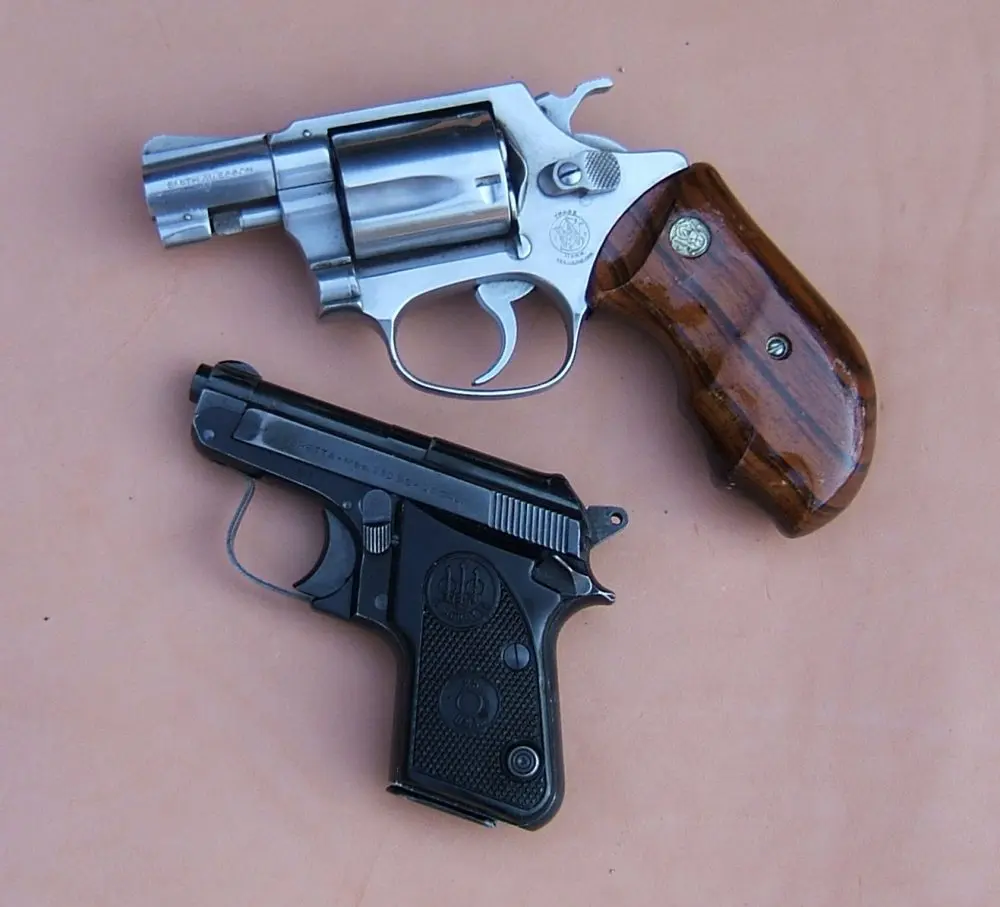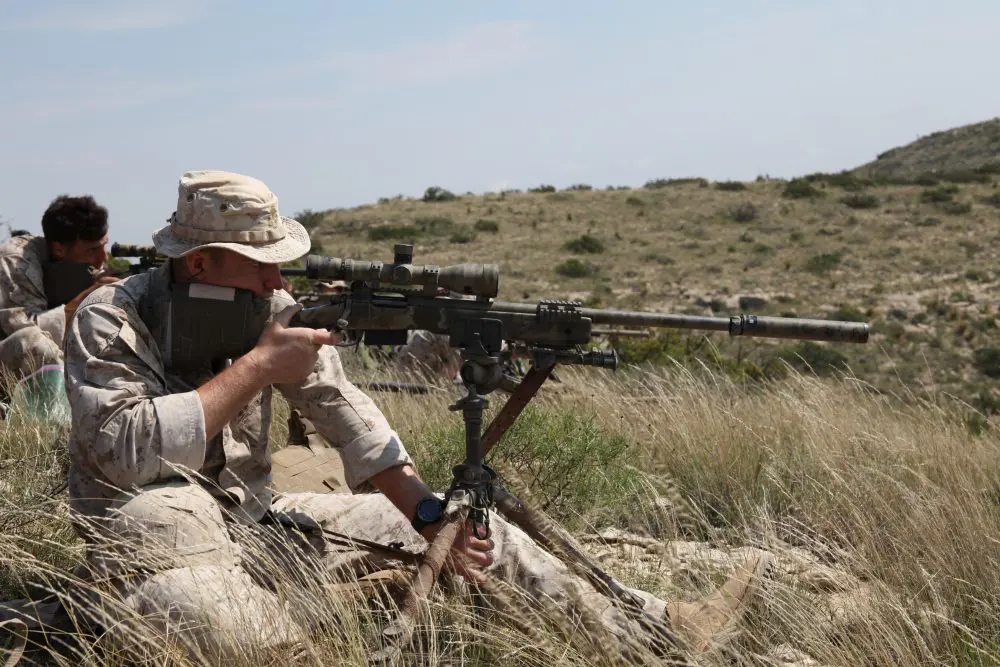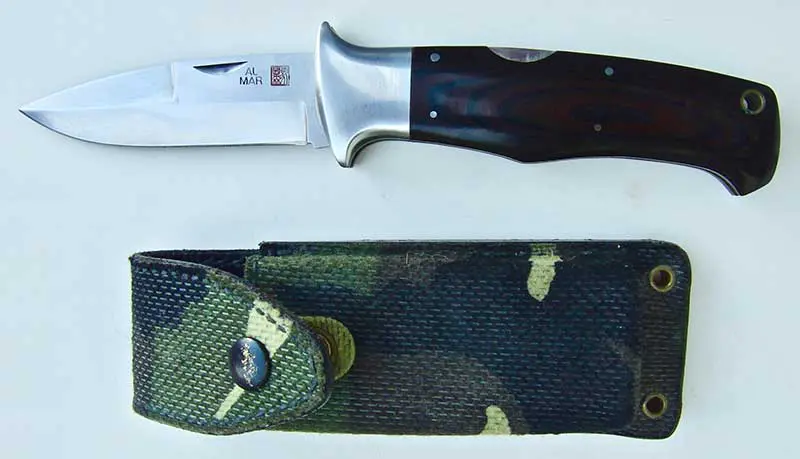
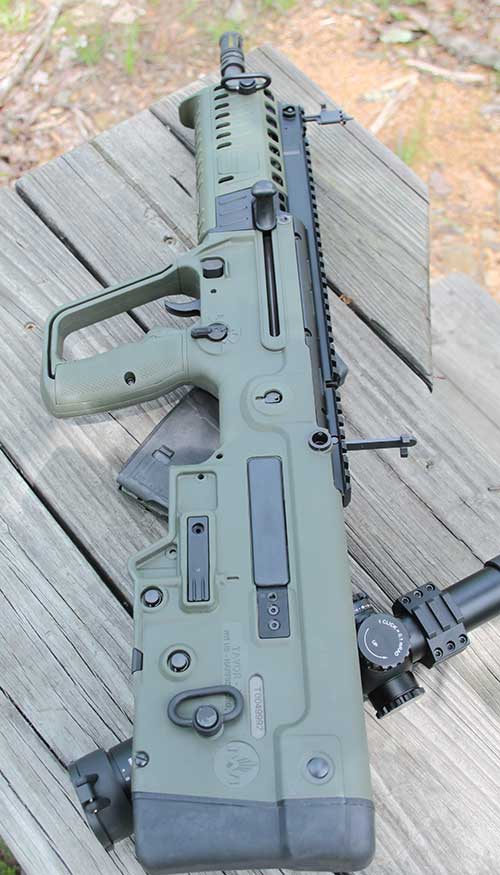
One must ask why Israel decided to invest the time and effort to develop the Tavor X95, especially considering they were being handed M16s as if from a Pez dispenser via generous U.S. aid packages. I will address why I believe the reason is because the X95 is a viable alternative to the typical AR or AK fare. The Israelis, who are constantly engaged with foreign and domestic threats, wanted a rifle that was more reliable, durable, and easier to maintain than the M16/M4. The importance of being self-reliant in arms production cannot be discounted either. It was deemed important to have one weapon that could seamlessly perform in urban environments as well as open spaces.
Due to the IDF’s close quarters and mechanized infantry requirements, the project team selected a bullpup design that would allow the weapon to be compact while still featuring a standard-length barrel, thus maintaining bullet velocities. The conscript nature of the IDF was also a contributing factor—a weapon with rugged reliability and low maintenance requirements was best, and troops would need to train only on one platform.
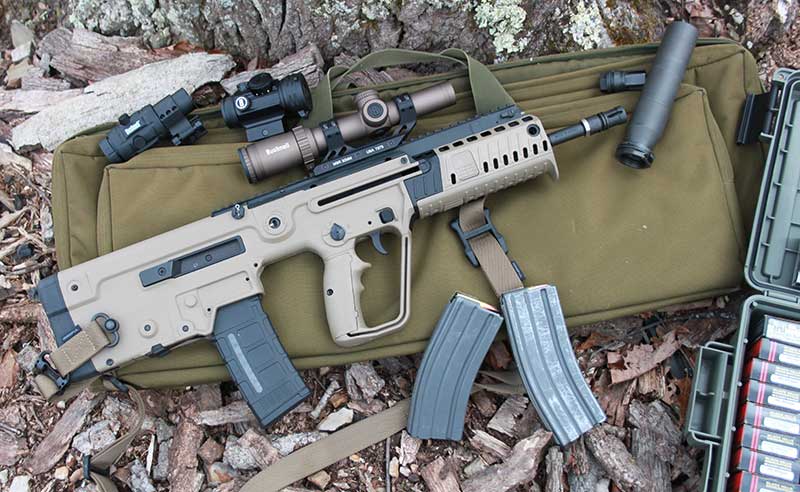
Hmmm … sounds perfect for a “go to war” rifle for civilian use too. This thought process is only sweetened with the U.S. market being able to access X95s chambered in .300 Blackout (BLK).
Table of Contents
TAVOR’S DEVELOPMENT
Original IDF Tavor development commenced in 1991 with the intention of the Tavor replacing Israel’s inventory of U.S. M16s and home-grown Galil rifles. The Tavor appeared in public in 1998 and began field testing by the IDF from 1999 to 2002. The Tavor X95 Bullpup is an updated version of the Tavor SAR. The X95 configuration began replacing the Tavor SAR in IDF armories in 2009. The operating mechanism remains the same between the two versions. The X95 differs in some important areas that I will get into shortly.
The X95 was introduced to the U.S. market at the 2016 SHOT Show. The Tavor X95 being available to the U.S. consumer is possible due to the assembling of the rifles in the U.S. from a combination of Israeli and U.S. manufactured parts to meet government compliance regulations at the IWI US facility located in Middletown, Pennsylvania.
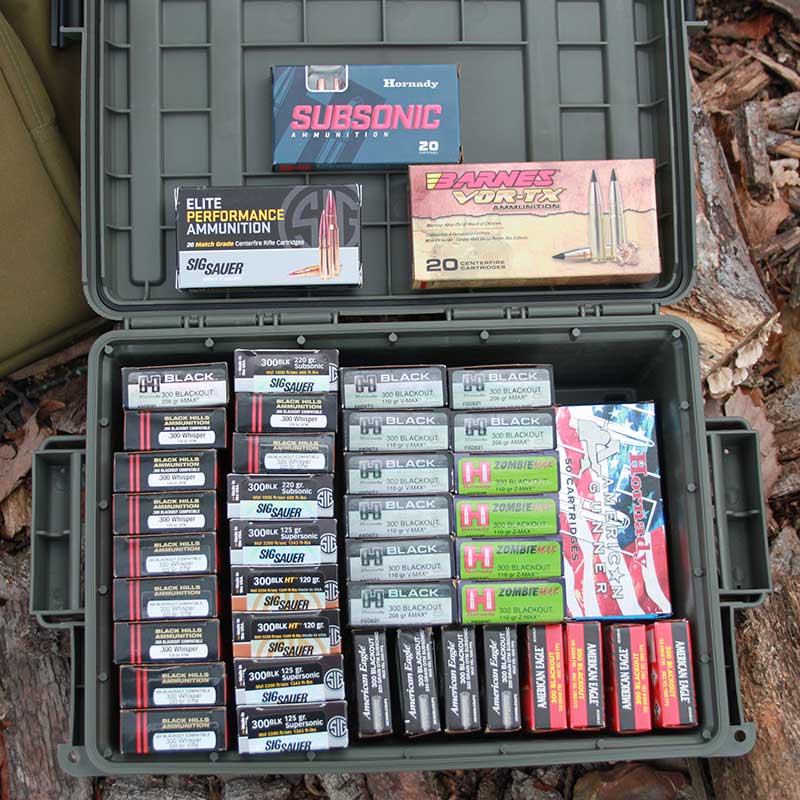
The X95 refinements will surely be appreciated by U.S. consumers, making it even more appealing than the already successful Tavor SAR model introduced in 2013. The X95’s non-reciprocating charging handle is located closer to the rifle’s center. This has the dual benefit of making it easier to manipulate, especially for smaller-statured shooters, as well as making room for a tri-rail forend. The railed forend has its Picatinny rails hidden beneath removable polymer covers until called upon for use.
Another significant departure from the earlier Tavor SAR is the ambidextrous magazine release location. It is now placed in a more traditional AR location above the trigger guard versus back at the magazine well.
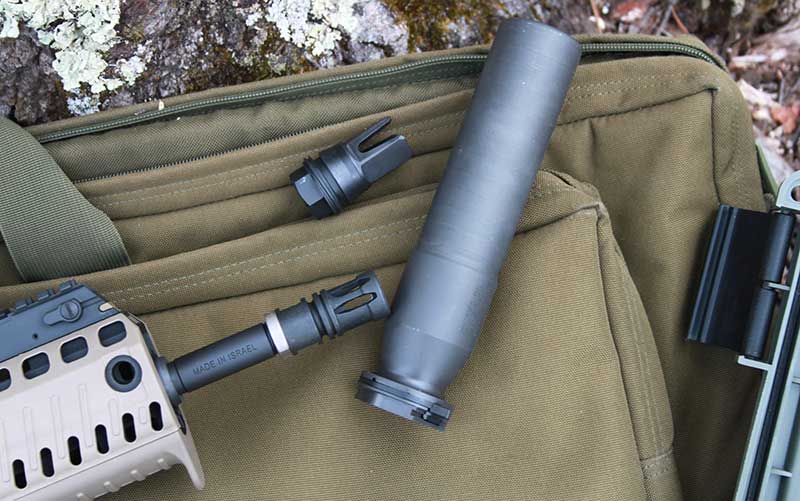
The X95 trigger is much improved compared to the earlier Tavor trigger pack. While still not comparable to the aftermarket Tavor trigger from Timney, the X95’s trigger is easily managed, measuring about six pounds after taking up slack. Lastly, the bolt release is in the same location behind the magazine but is now a lower profile design. All these changes contribute to more user friendliness.
RELIABILITY
Like the AK, which is legendary for reliability, the X95 utilizes a long-stroke piston rotating bolt. The X95 version tested here is chambered in .300 BLK, thus has an adjustable gas cylinder located above the barrel accessed through the Picatinny rail that can be set for normal and suppressed modes.
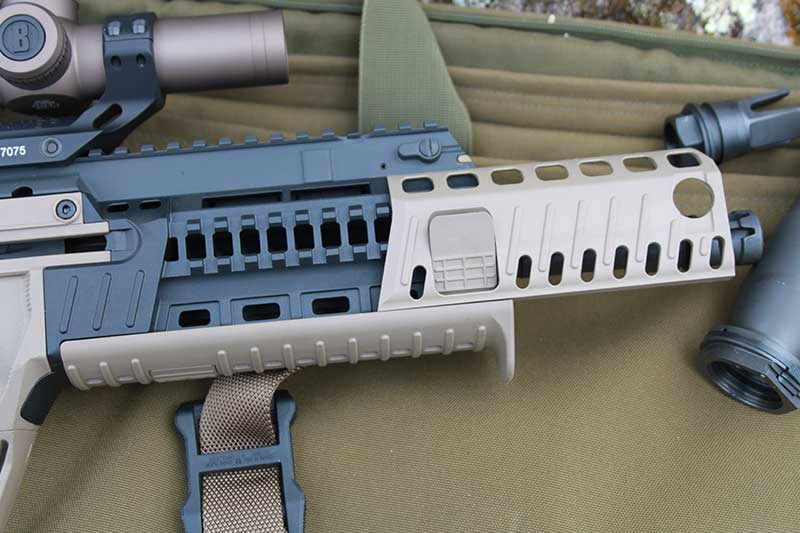
The long-stroke piston operating method combined with the weight ratio of the Tavor’s bolt group provides reliable extraction and chambering—perfect for harsh environments or when weapon care is neglected for whatever reason. The rotating bolt has seven lugs. Ejection ports are present on both sides of the weapon and can be selected by installing the bolt with the ejector mounted on the right or left.
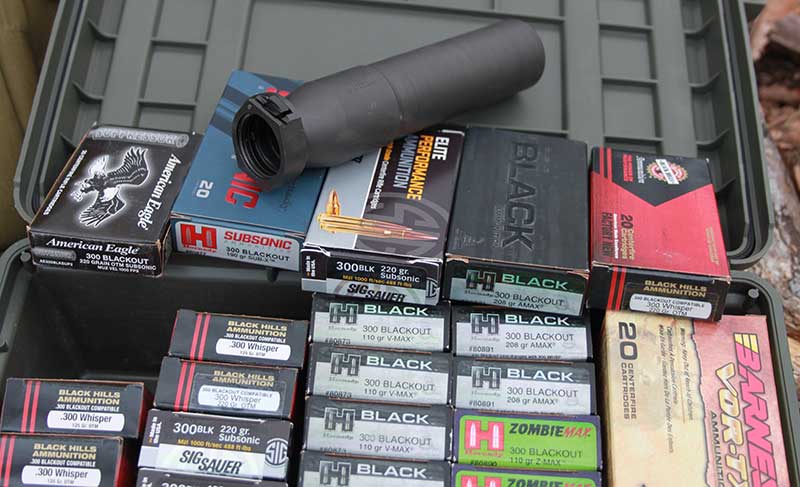
The non-reciprocating charging handle is located at the front left side of the gun. Charging handle slots are cut on both sides of the gun housing so the charging handle can be installed on either side of the weapon as well as for more ambidextrous adaptability.
NOW IN .300 BLK
IWI US’s decision to chamber the X95 in .300 BLK is a sage move in my opinion. The .300 BLK (7.62x35mm) was introduced by Advanced Armament Corporation (AAC) in cooperation with Remington Defense in response to U.S. special operation military forces. Literature illuminates the goal with the .300 BLK being the ability to launch .30-caliber projectiles from existing 5.56mm magazines without a reduction in magazine capacity or reliable functioning.
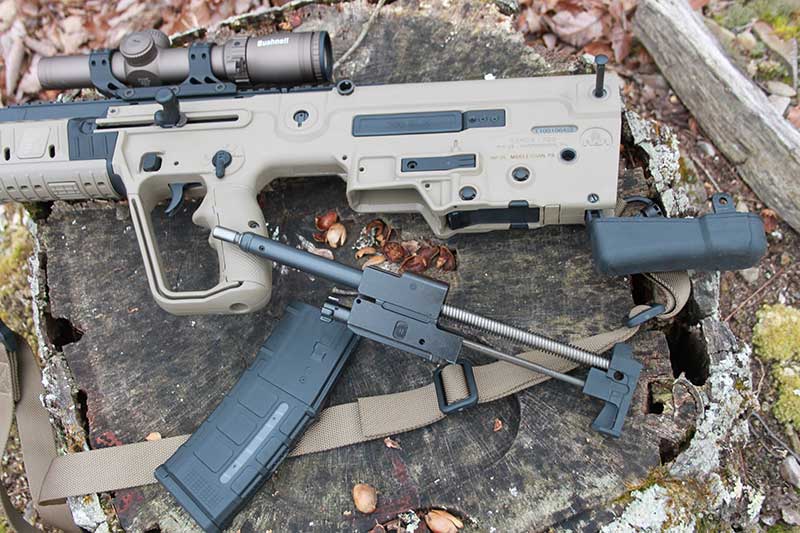
What distinguishes the .300 BLK is its ability to access standard supersonic rounds that are superior to 5.56mm ballistics while maintaining a trump card of subsonic ammunition for more discrete specialized work. [Editor’s Note: The .300 BLK was invented by J.D. Jones, who named it the 300 Whisper. Black Hills Ammunition still labels their boxes “300 Whisper” in acknowledgement of Jones’ contribution of this round.]
The IWI X95 .300 BLK has the ability to adjust the gas system for suppressed or normal fire. This is important considering the .300 BLK’s design intent. Noxious blowback is often the result when using platforms not set up properly for suppressor use. The X95 gas block’s suppressor setting assisted in minimizing blowback in my face during suppressor use. This is an important consideration.
One complaint/observation is the location of the gas port in the middle of the top Picatinny rail. Mounting of optics was problematic in keeping access open to the adjustment location without having to remove the optic. Red dots were not a slam dunk either, considering not wanting to place them in front of the gas block, as residue would cover the lenses.
SIGHTS AND OPTICS
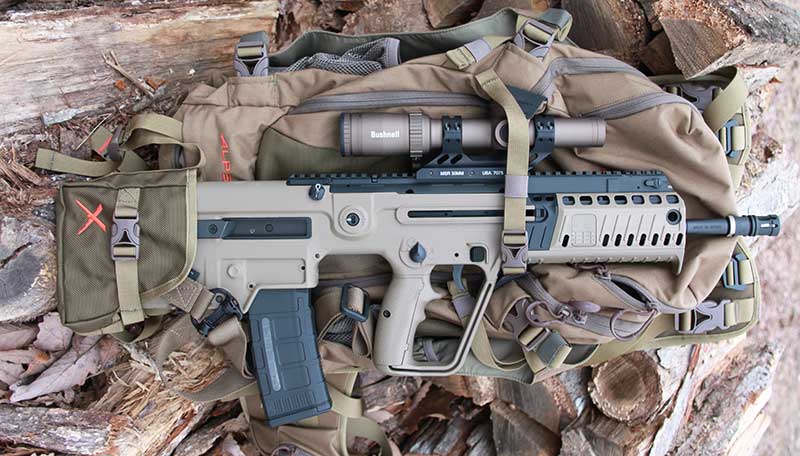
The IWI Tavor X95 tested weighs eight pounds and measures approximately 26 1/8 inches long with its 16.5-inch chrome-lined, cold-hammer-forged, 1:8 twist barrel. The chrome-lined barrel contributes to the low maintenance requirements associated with the X95. A Picatinny rail runs the length of the upper receiver and handguard. The X95 comes with functional iron sights that fold down into the Picatinny rail that serve well as backup iron sights (BUIS), since the rail cries out for a red dot or magnified optic.
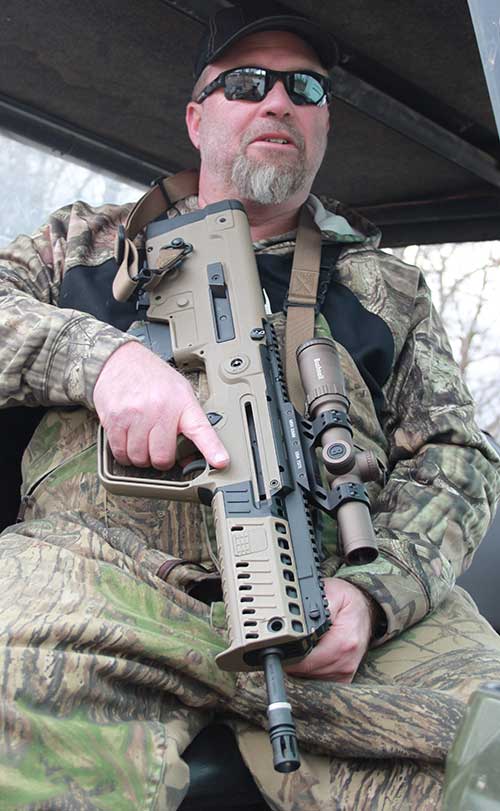
A Bushnell Elite Tactical SMRSII Pro 1-6.5×24 with illuminated reticle was used with the IWI Tavor X95. The SMRSII is designed for both instinctive close-range/low-magnification situations with variable-intensity red illuminated reticle, yet still allows shooters to engage targets with greater precision at longer ranges thanks to the 6.5X capability.
Mated to the variable-power Bushnell, the X95 is able to handle diverse shooting scenarios, i.e. close range or distant engagements, with equal aplomb. A reticle with multiple hash marks is preferred with a caliber such as .300 BLK, so that both subsonic and supersonic ammunition hold points can be established. Once sighted in, a user can take note of where each load strikes relative to each other and adjust accordingly either via scope turret knobs or with reticle hash marks depending on the situation.
The SMRSII’s 1-6.5X power range and reticle configuration eliminate the need for using multiple optics as scenarios change. The Bushnell is ideal for modern rifle platforms, with true eyes-open 1X illuminated dot capability and 6.5X zoom to locate targets at longer distances.
Another sight option from Bushnell is the Big D Red Dot combined with Bushnell 3X magnifier. The use of red dots or low-powered variable optics has become the norm on the battlefield and in law enforcement and personal defense.
The “closed” design of the Big D limits the effects that weather or other environmental conditions have on its performance. Rain, snow, and debris cannot interfere with the red dot being projected on the lens, enabling accurate shooting in any conditions. The magnifier allows for longer range targets to be engaged with more effectiveness, and tilts up out of the way for use of the red dot as intended.
OFF TO ECHO VALLEY
A wide variety of ammunition was tested with the IWI X95: Hornady 125-grain American Gunner and 190-grain SubX, SIG Sauer Elite 120-grain HT and 220-grain Match, American Eagle Suppressor 220-grain OTM, Barnes 110-grain TAC-TX, and Black Hills Ammunition 125-grain OTM. Accuracy was in the two- to three-inch range at 100 yards.
Multiple sessions at Echo Valley Training Center firing from and around vehicles and at the 360 Range and Hesco Shoot House provided orientation and instilled confidence in the IWI X95. Several magazines of ammunition engaged plate racks and man-sized steel targets. Drills quickly moved past stand-and-deliver drills to more dynamic drills involving movement, reloads, and firing from behind cover.
A SIG Sauer SRD762-QD Suppressor was also pressed into service to round out the experience. This was easily accomplished thanks to the SIG Taper-Lok muzzle device attached to the X95 muzzle via the 5/8×24 threads.
LIGHT AND HANDY
A combination of factors makes the israeli bullpup X95 seem lighter and handier than standard-profile rifles with similar barrel lengths: shorter overall length, center of gravity toward the rear of the rifle, and the shooter’s hands being closer together. These contribute to better handling over longer time frames due to lessening fatigue on the arms and shoulders—an important consideration for CQB operations such as structure clearing.
The compact X95’s superior leverage is a benefit to anyone of short stature. After years of firing AR- and AK-pattern rifles, the X95’s impulse is decidedly different in a positive way. Smoother and more subtle are two descriptions that come to mind, especially when firing multiple rounds rapidly.
With the Tavor X95, all users benefit from IWI’s decision to design a weapon based on the IDF’s combat experiences. The Tavor X95 offers users a chance to own and use a rifle different than the AR- and AK-pattern rifles so common today. A certain confidence in the weapon will be gained by knowing IWI’s heritage in arms development and daily use in harsh conditions that stand behind the Tavor X95.
SOURCES
IWI US, INC.
(717) 695-2081
www.iwi.us
BLACK HILLS AMMUNITION
(605) 348-5150
www.black-hills.com
BUSHNELL OUTDOOR PRODUCTS
(800) 423-3537
www.bushnell.com
ECHO VALLEY TRAINING CENTER
(540) 450-7998
www.echovalleytrainingcenter.com
FEDERAL PREMIUM AMMUNITION
(800) 379-1732
www.federalpremium.com
HORNADY MFG. CO.
(800) 338-3220
www.hornady.com
SIG SAUER
(603) 610-3000
www.sigammo.com


